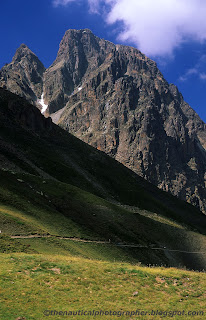In 1915 Alfred Wegener proposed a radical theory that would change forever our knowledge of the Earth's dynamics. Contrary to the many lab rats that abound on the scientific world, he was an active field researcher, having spent several years of his life in the remotness of the Greenland glacial deserts collecting data to prove his visionary idea: the continental drift.
According to him, in a certain time in the Earth's life, the continents were joined together thus constituting a vast and unique land mass, which he called "Pangea", surrounded by a vast ocean.
Somewhere in time, due to the tectonic movements of the Earth crust, that mass literally broke into pieces and those pieces started to separate from each other. Those pieces we now recognize as continents. Studies conducted during the fifties, particularly on the sea bed, just reinforced the theory.
The result of that latter investigation, together with the pioneering studies of Wegener, is now recognized worldwide as the correct interpretation of the Earth's telluric forces: the theory of plate tectonics.
And nowhere in the world can we see those forces in their full dimension as in the great mountain ranges.
As I was approaching, some years ago, the colossal massif of the Pyrenees, rising vertically above the Aragonese plains up to three and a half kilometres high, all that vision became my own. It's easy to imagine the Iberian plate clashing with the European one. Converging to each other. And after millions of years of geological torture a new mountain range is born. And its still growing.
That night, while resting in my tent, with the intimidating and cyclopic presence of the Midi d'Ossau peak close by and the vast celestial sphere above us, I felt more warmer than ever inside my sleeping bag. I was feeling the Earth as a living being. And I was a part of her.
And with that comforting though in mind, I fell asleep.
Pic du Midi d'Ossau (2884 meters), in the French Pyrenees, from the approaching trail.
Picture taken with Pentax SF1 camera and Pentax SMC 50mm f:1.7 AF lens.
Fujichrome Velvia ASA 50 scanned in Nikon Coolscan V ED.
Post-processing in Adobe Photoshop CS3.



.jpg)


No comments:
Post a Comment